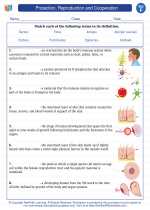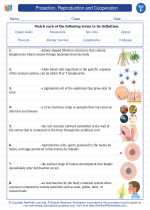Environmental Conditions
Environmental conditions refer to the physical, chemical, and biological factors that surround and influence an organism or a community. These conditions play a crucial role in determining the distribution and abundance of organisms in an ecosystem. Understanding environmental conditions is essential for studying the interactions between organisms and their environment.
Physical Environmental Conditions
Physical environmental conditions include factors such as temperature, light, water, and soil. These factors have a direct impact on the survival and growth of organisms.
- Temperature: This refers to the degree of hotness or coldness of a substance or environment. Different organisms have specific temperature ranges in which they can survive and thrive.
- Light: Light is essential for photosynthesis in plants and can also influence the behavior and activity patterns of animals.
- Water: Availability of water is crucial for the survival of all living organisms. Aquatic organisms are directly dependent on water, while terrestrial organisms need water for various physiological processes.
- Soil: Soil properties such as texture, pH, and nutrient content can greatly influence the types of plants that can grow in a particular area.
Chemical Environmental Conditions
Chemical environmental conditions encompass factors such as pH, salinity, and nutrient availability. These factors can affect the chemical composition of an organism's body and its ability to carry out essential physiological functions.
- pH: pH levels can impact the chemical reactions occurring within an organism. Different organisms have specific pH ranges in which they can survive.
- Salinity: The concentration of salt in water bodies can influence the types of organisms that can inhabit those environments.
- Nutrient Availability: Nutrients such as nitrogen, phosphorus, and potassium are essential for the growth of plants and the overall productivity of an ecosystem.
Biological Environmental Conditions
Biological environmental conditions refer to the interactions between different species within an ecosystem, including competition for resources, predation, and mutualistic relationships.
- Competition: Organisms compete for resources such as food, water, and shelter within an ecosystem. Competition can influence the distribution and abundance of species.
- Predation: Predatory interactions can control the population sizes of prey species and influence the overall structure of communities.
- Mutualism: Some species engage in mutually beneficial relationships, where both partners derive benefits from the interaction. These relationships can have significant impacts on the ecosystem.
Study Guide
When studying environmental conditions, it is important to consider the interactions between the physical, chemical, and biological factors present in an ecosystem. Here are some key points to focus on:
- Identify and describe the physical factors influencing a specific ecosystem, such as temperature, light availability, and water sources.
- Examine the chemical composition of the environment, including pH levels, nutrient availability, and salinity.
- Investigate the biological interactions within the ecosystem, including competition, predation, and mutualistic relationships.
- Consider how environmental conditions influence the distribution and abundance of organisms within the ecosystem.
- Explore the adaptations of organisms to specific environmental conditions and their role in maintaining ecological balance.
By understanding and studying environmental conditions, we can gain valuable insights into the complex relationships between living organisms and their environment.
.◂Science Worksheets and Study Guides Sixth Grade. Protection, Reproduction and Cooperation

 Worksheet/Answer key
Worksheet/Answer key
 Worksheet/Answer key
Worksheet/Answer key
 Vocabulary/Answer key
Vocabulary/Answer key
 Vocabulary/Answer key
Vocabulary/Answer key
 Vocabulary/Answer key
Vocabulary/Answer key
